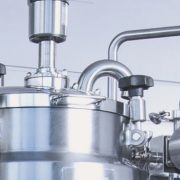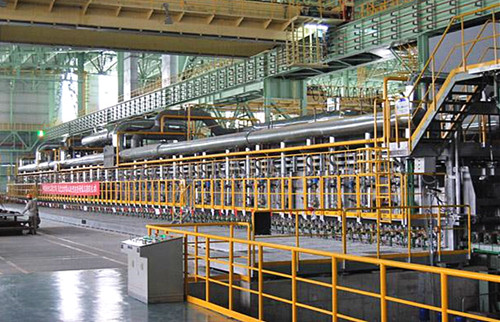304 Stainless Steel VS 321 Stainless Steel
Both grade 304 and 321 belong to the Austenitic 300 series stainless steel. They are similar in corrosion resistance, strength, hardness and welding performance, but 321 is mostly used in the heat resistance condition of 500-600 ℃. 321H stainless steel is the low-carbon version of 321, is the commonly used heat resistant steel, of which carbon content is slightly higher than 321 grades. 304 steel is an alternative to 321 stainless steel where intergranular corrosion resistance rather than high temperature strength is required.
In a way, grade 321 stainless steel is a new version based on grade 304 by adding Ti to improve the corrosion resistance of grain boundary and high temperature strength. As a stabilizing element, Ti element control the formation of chromium carbide, effectively, making 321 has a robust high-temperature strength, even much better than 304, 316L. A larger content of nickel makes 321 stainless steel has good abrasion resistance in different concentrations and temperatures of organic acids, especially in oxidizing media. 321 stainless steel has better Stress Rupture property and Creep Resistance Stress mechanical property than 304 stainless steel. Let me show exactly is the difference between them with the two tables below.
Chemical Composition of 304, 321, 321H
| Grades | C | Si | Mn | Cr | Ni | S | P | N | Ti |
| 304 | 0.08 | 1.0 | 2.0 | 18.0~20.0 | 8.0~10.5 | 0.03 | 0.045 | / | / |
| 321 | 0.08 | 1.0 | 2.0 | 17.0-19.0 | 9.0-12.0 | 0.03 | 0.045 | 0.1 | 5C-0.70 |
| 321H | 0.04-0.1 | 1.0 | 2.0 | 17.0-19.0 | 9.0-12.0 | 0.03 | 0.045 | 0.1 | 0.16-0.7 |
Mechanical Property of 304 and 321
| Grades | Tensile strength, Mpa | Yield strength, Mpa | Elongation, % | Hardness,HB |
| 304 | ≥520 | 205-210 | ≥40≥40 | HB187 |
| 321 | ≥520 | ≥205 | HB187 |
As can be seen from the above table, 321 stainless steel contains titanium and more nickel (Ni) than 304, according to ASTM A182, the content of Ti should not be less than 5 times of carbon (C) content, but not more than 0.7%. Ti can prevent stainless steel sensitization and improve the high temperature service life, that is to say, grade 321 is more suitable for manufacturing wear-resistant acid containers, wear-resistant equipment and conveying pipes or other parts than 304 stainless steel in high-temperature environment.
304 and 321 stainless steel are both can be used for chemical, oil and gas, automotive fields. Grade 304 is general-purpose stainless steel and has the most extensive applications in the stainless steel family, such as tableware, cabinets, boilers, auto parts, medical appliances, building materials, chemicals, food industry, agriculture, shipping, oil transportation and so on. Grade 321 is used in chemical, coal and petroleum fields where required resistance to grain boundary corrosion and high temperature properties such as oil exhaust combustion pipes, engine exhaust pipes, boiler enclosures, heat exchangers, furnace components, diesel engine silencer components, boiler pressure vessels, chemical transport tanks, expansion joints, furnace pipes, etc




